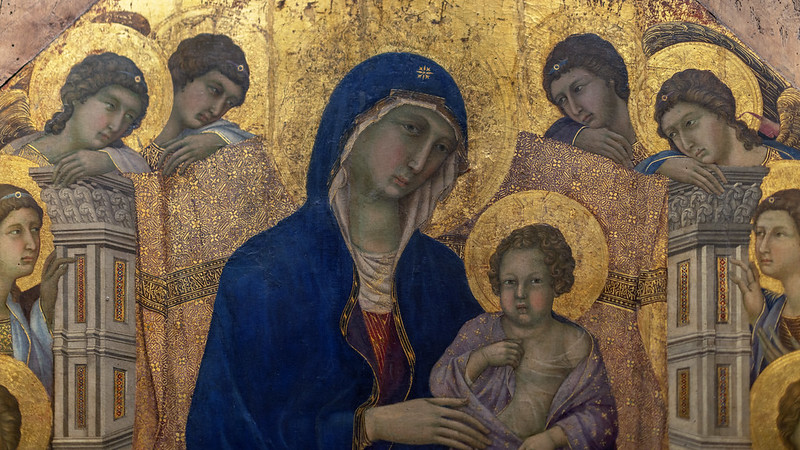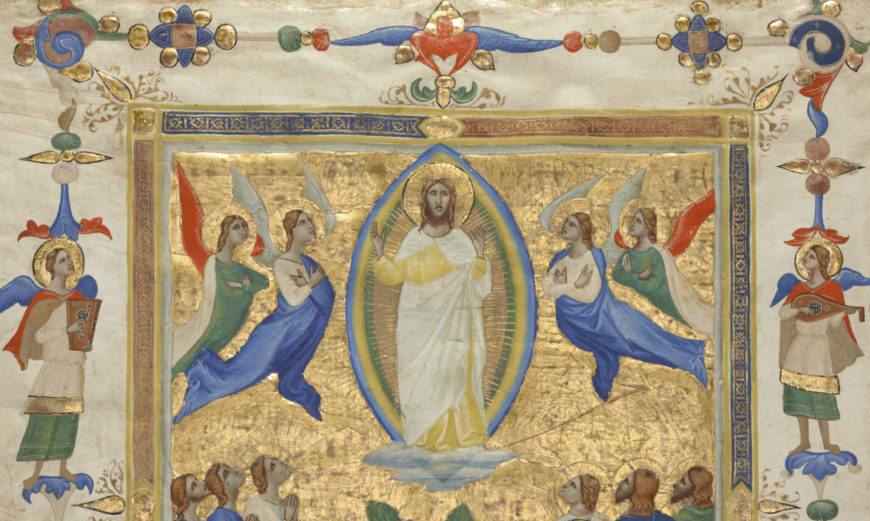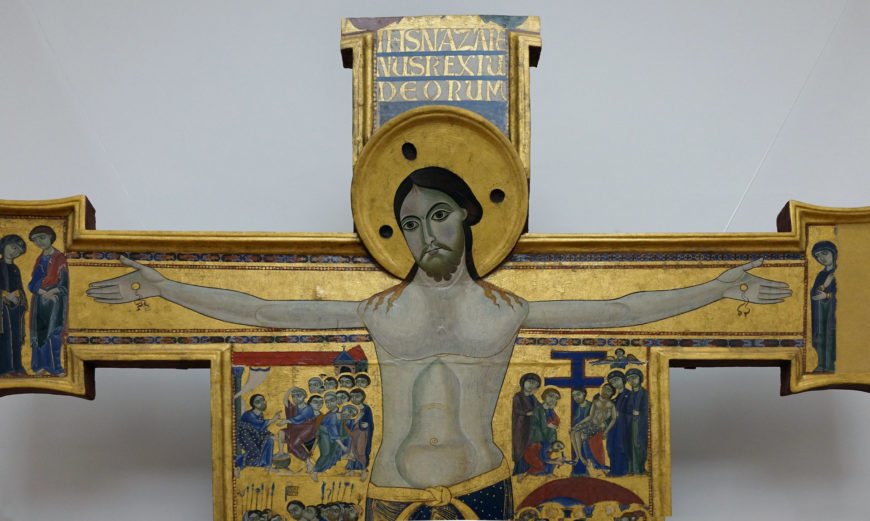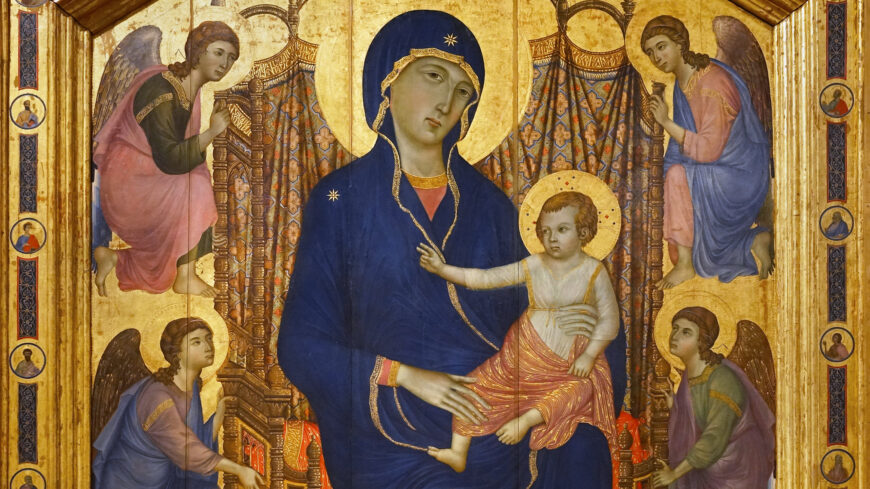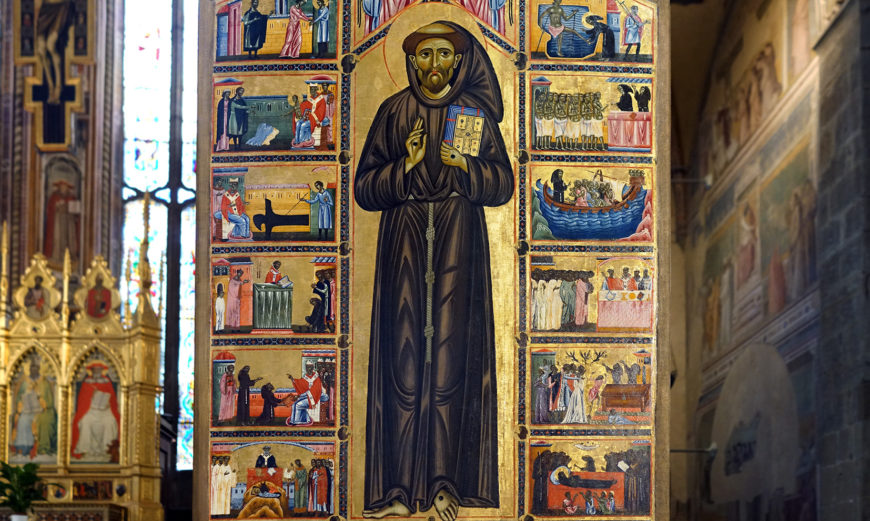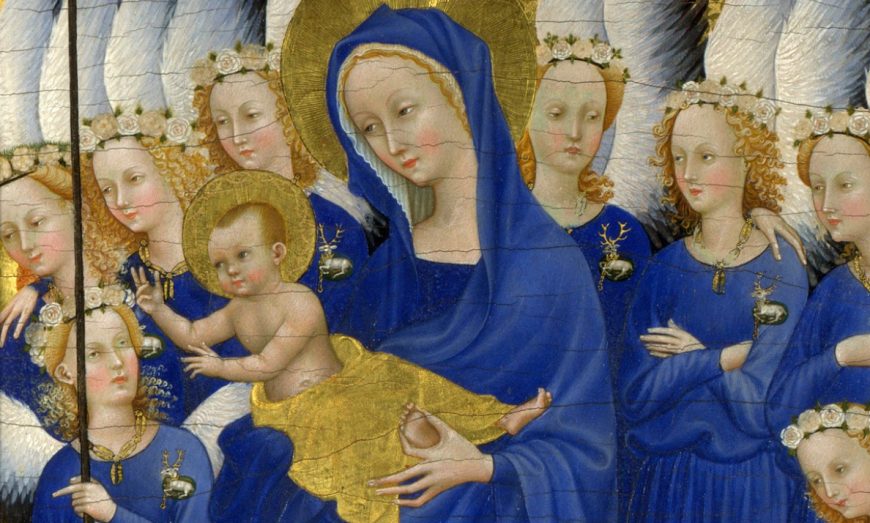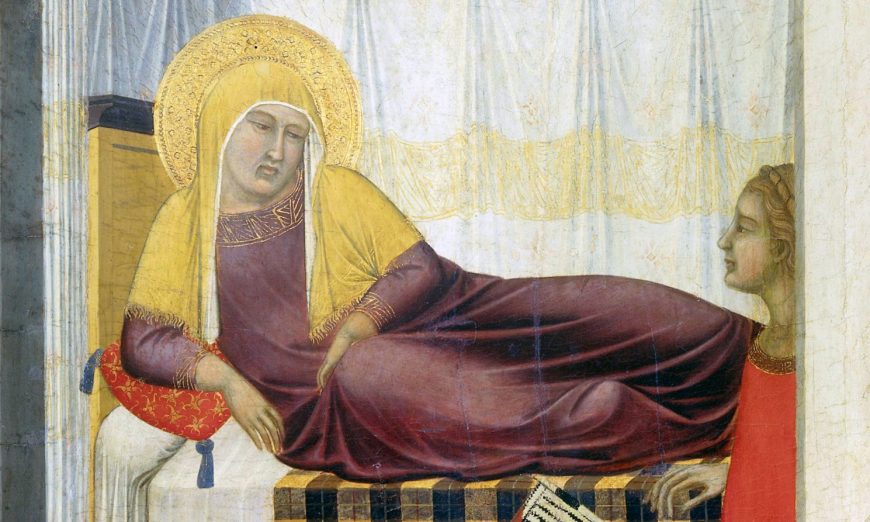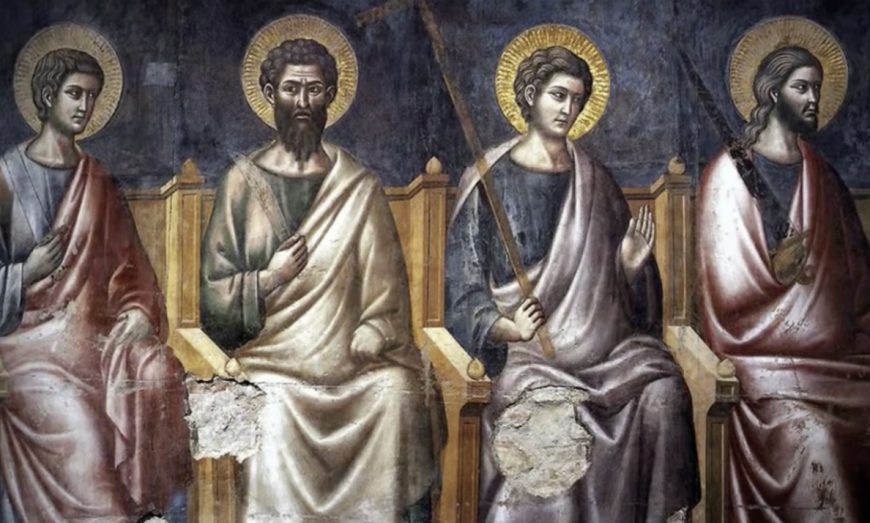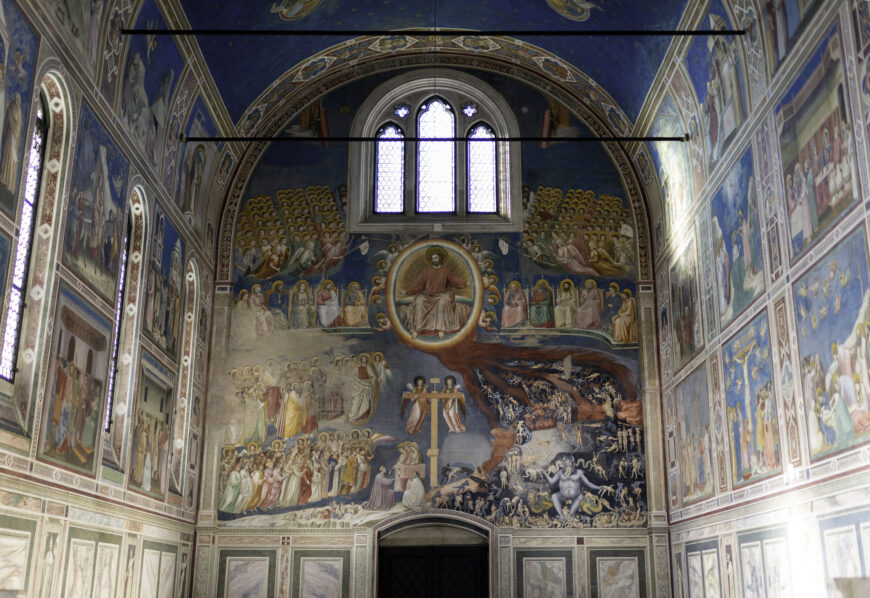Simone Martini, Annunciation, 1333, tempera on panel, 72 1/2 x 82 5/8″ (184 x 210 cm) (Galleria degli Uffizi, Florence)
Simone Martini, Annunciation
[0:00] [music]
Dr. Beth Harris: [0:11] We’re in Uffizi, looking at a painting by Simone Martini and Lippo Memmi of the Annunciation. Now, art historians spend a lot of time trying to figure out who painted what here. Some art historians see the central scene of the Annunciation painted by Simone Martini and the two figures on either side by Memmi.
Dr. Steven Zucker: [0:29] That desire to ascribe the most important part of the painting to the more famous artist comes from the writing of Giorgio Vasari, a 16th century chronicler of Italian painting. Simone Martini was favored because he was one of the most prominent students of the most famous Sienese artist of the previous generation, Duccio.
Dr. Harris: [0:46] Let’s step back for a moment. In the 14th century, Siena, just south of Florence, was a very important city-state in Italy. Italy was not a unified country. Duccio had created for the cathedral of Siena this double-sided altarpiece, the “Maestà”.
Dr. Zucker: [0:00] This painting was seen as a tremendous triumph.
Dr. Harris: [1:05] Siena saw its great success as dependent on the favor of the Virgin Mary, and Duccio’s “Maestà” focused on the Virgin Mary as the queen of heaven.
Dr. Zucker: [1:17] The city was incredibly prosperous at this moment and planned on expanding the cathedral dramatically. In anticipation of this, the city commissioned four additional altarpieces for the cathedral.
[1:32] Here we are standing in front of one of those subsidiary altarpieces. This one’s showing an early story in Mary’s life, the Annunciation, with the archangel Gabriel announcing to the Virgin Mary that she will bear the son of God, that she will bear Christ.
Dr. Harris: [1:43] Coming out of the angel Gabriel’s mouth we can see his words, “Hail, full of grace, the Lord is with thee.”
Dr. Zucker: [1:56] The surface of the painting is literally built up, likely with stucco, and then that stucco is gilded, and so those words have a sense of physicality.
Dr. Harris: [2:06] Mary seems to react physically to them as well, as those words head in her direction and she, very gracefully and modestly, pulls back away from them.
Dr. Zucker: [2:11] It seems as if she’s been interrupted reading a book, presumably the Bible, showing her piety. She is wonderfully elegant, with long features — that long nose, long fingers, an attenuated, lengthened body. All references to the older Byzantine style that had been adopted by Sienese painters during the late medieval period.
[2:31] We have the archangel Gabriel, who seems as if he’s just landed. His drapery is still aflutter.
Dr. Harris: [2:37] Between Mary and the angel Gabriel, we see a golden vase of lilies, a symbol of Mary’s purity.
Dr. Zucker: [2:44] Whereas Gabriel, for his part, holds an olive branch, a symbol of peace.
Dr. Harris: [0:00] Above the lilies, we see what looks like a sunburst with a dove at the center.
Dr. Zucker: [2:53] This represents the Holy Spirit. If you look closely, you can see that it’s got a halo. Out of its mouth come rays which are aimed directly at Mary.
Dr. Harris: [3:02] The dove is surrounded by seraphs. These are a high rank of angels that have multiple wings.
Dr. Zucker: [3:09] And are commonly represented with heads but without bodies.
Dr. Harris: [3:13] If our eye continues to move up above the dove, we see an empty circle that likely held originally an image of God the Father.
Dr. Zucker: [3:21] What distinguishes this painting, even from the earlier style of Simone Martini, is its extraordinary elegance. There’s such a linear quality to this painting. Look, for example, at the elegant turns of Gabriel’s cloak, of the attention to the individual feathers in his wings, the delicacy with which the lilies are painted, or the face of the Virgin.
Dr. Harris: [3:49] Or these lovely curvilinear forms. For example, that drapery that flutters behind the angel Gabriel, or the hem of Mary’s garment that weaves back and forth. In addition to that sense of elegance, there’s a sense of sumptuousness, of richness. Look at that fabric worn by the angel Gabriel.
Dr. Zucker: [4:02] This fabric is meant to mimic the extremely rich silks that were being imported from the East. The technique that the artist used here is to apply a ground of gold, paint white over it, and then scrape that white away to reveal the gold underneath.
Dr. Harris: [4:18] This is such detailed work, so finely crafted. On either side of the angel Gabriel and Mary, we have two saints. On the left, Saint Ansanus, who was an important patron saint of Siena.
Dr. Zucker: [4:36] And Ansanus is appropriately holding a flag with the colors of Siena. There are four additional rondels with painted busts. These include Old Testament prophets.
[4:41] You can tell they’re Old Testament prophets because they hold scrolls, and are included here as a way of expressing that the Old Testament, the Judaic tradition, was a foundation upon which Christianity was built.
Dr. Harris: [4:52] That the prophets of the Old Testament foretold the coming of a savior, and this is the moment when that savior arrives, when God is made flesh.
Dr. Zucker: [5:03] The artist has allotted a little bit of space for the figures to exist in. It’s almost as if the figures are standing on a shelf. There’s almost no room in front of them, and very little room behind them until you get to this wall of gold. It is really meant to represent the spiritual light of heaven.
[5:27] Imagine for just a moment seeing this painting in the Duomo of Siena, the main church of Siena. This is a church whose walls are made of white and black stone, creating a kind of dizzying effect. Imagine the spiritual power of an image like this in the dim light of the church, with incense, with music.
Dr. Harris: [5:47] And this painting, one of four surrounding Duccio’s great masterpiece, the “Maestà,” the celebration of the Virgin Mary, the patron and protectress of Siena.
[0:00] [music]
| Title | Annunciation |
| Artist(s) | Simone Martini |
| Dates | 1333 |
| Places | Europe / Southern Europe / Italy |
| Period, Culture, Style | Gothic / Late Gothic |
| Artwork Type | Painting |
| Material | Tempera paint, Gold, Panel |
| Technique | Gilding |
Loading Flickr images...


